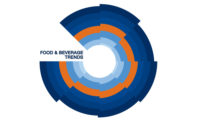HITTING THE SHELVES
Focus on Chocolates, Candies & Confections
A look at new chocolates, candies and confections making a debut in September 2018












Chocolate’s Charm
Mintel eyes consumer attitudes, habits and preferences with chocolate
There’s no mistaking chocolate’s charm. It’s a product with worldwide appeal and consumers are looking for products that fit their snacking habits, diets and seasonal celebrations, according to Mintel.
While the lure of chocolate remains strong, it seems many consumers are enjoying it with an element of self control. According to Mintel Global New Products Database (GNPD), global launches of chocolate products described as “bites” have grown 50% during the past five years; with “thins” not far behind, increasing 48% during the same period.
But just as bite-sized formats are increasing in popularity, consumers are losing their appetite for “light” versions of confectionery (such as low-sugar or low-fat varieties). Launches of products described as “light” fell by 22% between 2013 and 2017. What’s more, it seems many US consumers are ambivalent about counting calories as only 35% of consumers who are currently managing their weight/have ever done so consider calorie-controlled snacks to be effective as a weight management tool.
“The growth of bite-sized chocolate points to the ongoing trend of permissible indulgence,” says Marcia Mogelonsky, director of insight, Mintel Food and Drink. “Pre-measured, 100-calorie packs of chocolate or other treats have fallen from favor as consumers move away from diets that focus on strict calorie counts. Offering consumers a ‘bite’ or a ‘thin’ piece of chocolate provides an easier way to measure intake, and one that allows for a bit of wiggle room.”
Tis The Season
When it comes to chocolate eggs, bunnies and other treats, it seems there has never been so much choice for chocolate lovers around the world. According to Mintel’s GNPD, there has been a delicious 23% rise in Easter chocolate launches over the past year providing a plethora of chocolate choice for Easter egg hunts across the globe.
Countries leading the way in Easter chocolate innovation include Brazil, which accounted for 11% of global Easter chocolate product launches in 2017, followed by South Africa, Germany and the UK, each with a 10% share, and finally France (9%).

Taza Chocolate, Somerville, Mass., offers flavorful bites and bark-style snacking chocolate.
Reflecting the importance of seasonal products as a whole, in 2017, almost one-quarter (23%) of global chocolate launches were positioned as seasonal, such as Christmas, Easter, Valentine’s Day and Halloween.
Overall, the US and Germany lead in terms of total chocolate new product development (NPD), each accounting for 8% of new product launches in 2017. This is followed by France (7%), the UK (5%) and Brazil (4%).
“Easter represents one of those ‘permissible indulgence’ moments where consumers enjoy giving and receiving chocolate treats. The holiday also marks a time for increased innovation in confectionery as consumers seek new and novel products,” says Mogelonsky. “In the UK, for example, Easter eggs flavored with beer or stout, which were the rage in past years, have given way to new alternatives such as gin-and-tonic flavored eggs. In Germany, the introduction of vegan Easter bunnies and eggs reflects the growing popularity of a plant-based diet in that country. Brazil continues to remain at the top of the leaderboard in terms of new product development and it seems there is no end to Brazilians’ appetite for Easter chocolate innovation.”
Strong interest in vegan chocolate confectionery
Finally, Mintel research highlights considerable potential for vegan chocolate across Europe. More than half of chocolate eaters in Spain (55%), France (53% ) and Poland (53%) are interested in vegan chocolate, with their counterparts in Italy (48%) and Germany (44%) lagging only slightly behind. Vegan confectionery is also slowly being introduced into the UK: in 2017, 8% of chocolate launches in the UK were vegan.
“There’s currently a focus on plant-based eating in the chocolate sector. Manufacturers have responded to the growing interest in plant-based diets by replacing dairy milk with nut- or grain-derived milks in milk chocolate products. In some markets, this may be responding to a potential, but not yet articulated need,” concludes Mogelonsky.
Looking for a reprint of this article?
From high-res PDFs to custom plaques, order your copy today!





